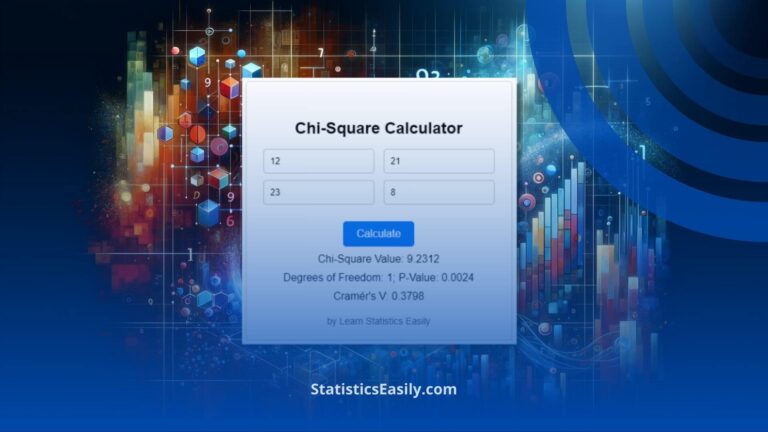What Does The P-Value Mean?
The p-value represents the probability that the observed difference between groups (or the relationship between variables) occurred randomly.
Have you often encountered the p-value in a statistical test, attempted to understand its meaning, but never quite grasped it?
Don’t worry; you’re not alone! This is a frequently asked question in statistics!
With this article, we guarantee that you’ll quickly understand, once and for all, the meaning of the p-value in statistical tests!
The Problem
The p-value is present in inferential statistical tests. The most well-known examples of these tests are Student’s t-test, ANOVA, chi-square, Pearson correlation, and linear and logistic regressions.
But what is their fundamental importance, and why do we need inferential statistics?
We need to work with samples because obtaining data from an entire population is logistically, technically, temporally, and financially impossible.
Thus, we need inferential statistics to draw conclusions about a population while only studying a portion of it.
The Solution
Disclaimer: We’d like to clarify that this is not the most precise definition of the p-value, but it is the most didactic. At the end of the article, we provide more information about this.
Let’s cut to the chase! The p-value is simply a probability, which, of course, ranges from 0 to 1 (0 to 100%). But a probability of what?
The answer is straightforward:
The p-value represents the probability that the difference detected between the analyzed groups occurred randomly.
– A small p-value (p ≤ 0.05, i.e., probability less than or equal to 5%) indicates a small probability that the observed difference between the groups is random. Therefore, you consider a significant difference between the groups.
– A high p-value (p > 0.05, i.e., probability greater than 5%): indicates a high probability that the observed difference between the groups is random. Hence, you consider no significant difference between the groups.
In the explanation above, we used “difference between groups” as an example, which applies to analyses such as the t-test and ANOVA.
For tests like Pearson’s correlation and linear regression, we would say “relationship between the variables,” but that’s for another article.
Concluding Remarks
The vast majority of scientific research requires inferential analysis. You’ve likely read this article this far because your scientific investigations need it too!
Understanding the meaning of the p-value is crucial for developing scientific knowledge.
Given that inferential statistics are based on data showing variations due to chance, we can only determine, through statistical tests, whether the differences observed in our data are solely due to chance. This is done, to a certain extent, by analyzing the p-value.
The most practical and easy-to-understand definition of the p-value is the one we’ve just provided:
The probability that the difference detected between the analyzed groups occurred by chance!
Please note the following information:
The definitions, understandings, and explanations used here are the most general and widely employed in introductory statistics or biostatistics courses and textbooks.
This approach makes understanding the concepts more accessible and easy for those not directly connected with the exact sciences.
However, some statisticians have criticized this understanding.
As a result, the American Statistical Association recently published an editorial “on statistical significance and p-values,” with aspects slightly different from those portrayed here.
Below is a more accurate but less intuitive definition:
The p-value represents the probability of obtaining a result that is equal to — or even more extreme than — that derived from our data, assuming the null hypothesis is true.
You can now read our new article on this topic: p-value returns!








